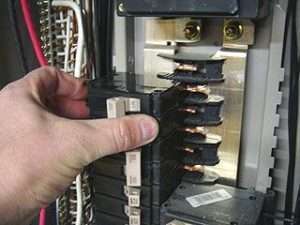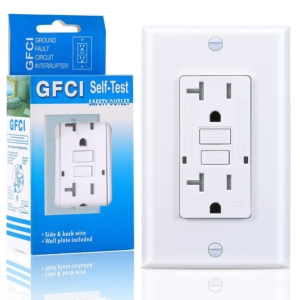Dryer Breaker Size: Why it Matters and How to Choose the Right One
If you’re installing a new or replacing an old dryer, choosing the right breaker size is important for preventing electrical issues and ensuring your dryer operates efficiently. In this blog post, we’ll explain why dryer breaker size matters and provide tips on choosing the right one.
What is a breaker size, and how does it relate to your dryer?
A breaker size refers to the amperage capacity of the breaker that controls the flow of electricity to your dryer. The breaker protects your electrical system by shutting off the power when the circuit is overloaded or shorted. Breaker sizes vary depending on the electrical requirements of the appliance, and it’s essential to choose the right breaker size to ensure your dryer operates safely and efficiently.
Factors to consider when choosing the right breaker size for your dryer
There are several factors to consider when choosing the right breaker size for your dryer:
- The electrical requirements of your dryer: Every dryer has specific electrical requirements listed in the manufacturer’s specifications. You’ll need to know your dryer’s voltage, amperage, and wattage requirements to choose the right breaker size.
- The capacity of your electrical panel: Your electrical panel has a maximum capacity, and you’ll need to ensure that the breaker you choose for your dryer doesn’t exceed that capacity.
- The distance between your dryer and electrical panel: The distance between your dryer and electrical panel affects the voltage drop, which can affect the performance of your dryer. If the distance is too long, you may need to choose a higher breaker size to compensate.
- The electrical code requirements in your area: Electrical codes vary depending on where you live, and it’s essential to follow these codes to ensure the safety of your electrical system.
Steps to determine the right breaker size for your dryer
To determine the right breaker size for your dryer, follow these steps:
- Check the manufacturer’s specifications for your dryer: Look for your dryer’s voltage, amperage, and wattage requirements.
- Calculate the electrical requirements of your dryer: Multiply the voltage and amperage to get the wattage. For example, if your dryer requires 240 volts and 30 amps, the wattage requirement is 7,200 watts.
- Check the capacity of your electrical panel: Your electrical panel should have a label that indicates the maximum amperage capacity. Ensure the breaker you choose for your dryer doesn’t exceed this capacity.
- Determine the distance between your dryer and electrical panel: If the distance is more than 100 feet, you may need to choose a higher breaker size to compensate for voltage drop.
- Consult a licensed electrician if necessary: If you’re unsure about your dryer’s electrical requirements or breaker size, it’s best to consult a licensed electrician.
Common breaker sizes for dryers and their corresponding electrical requirements
There are three common breaker sizes for dryers:
- 30-amp breaker: A 30-amp breaker is suitable for dryers that require up to 7,200 watts. This breaker is commonly used for electric dryers.
- 40-amp breaker: A 40-amp breaker is suitable for dryers that require up to 9,600 watts. This breaker is commonly used for electric dryers with larger heating elements.
- 50-amp breaker: A 50-amp breaker is suitable for dryers that require up to 12,000 watts






